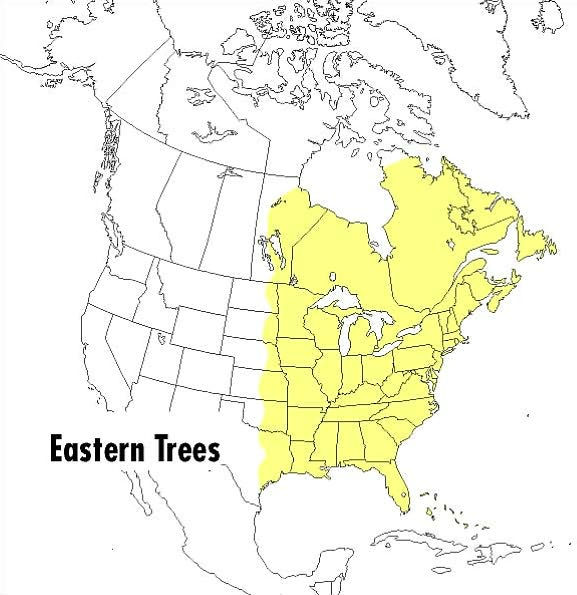Table of Contents
Editor’s Note vii Preface ix Illustrated Plan of the Six Main Sections xvi–xvii How to Use This Book 1 Tree Silhouettes 19 PLATES 33 SPECIES ACCOUNTS 153 I. Trees with Needlelike or Scalelike Leaves Mostly Evergreen (Plates 1–5) 155 Conifers with Needles in Clusters: Larches and Pines I (Plate 1) 156 Conifers with Needles in Clusters: Pines II (Plate 2) 163 Conifers with Needles Short on Woody Pegs: Spruces (Plate 3) 173 Conifers with Flat Needles (Plate 4) 175 Conifers with Scalelike or Three-sided Hollow Leaves (Plate 5) 180 Needle-bearing Non-Conifers 185
II. Broad-leaved Trees with Opposite Compound Leaves (Plates 6–9) 187 Trees with Opposite Fan-compound Leaves: Buckeyes and Chastetree (Plate 6) 188 Small Trees with Opposite Compound Leaves: Bladdernut and Elderberry (Plate 7) 192 Trees with Opposite Feather-compound Leaves: Ashes I (Plate 8) 194 Trees with Opposite Feather-compound Leaves: Ashes II and Ashleaf Maple (Plate 9) 196
III. Broad-leaved Trees with Opposite Simple Leaves (Plates 10–14) 199 Trees with Opposite or Whorled Heart-shaped Leaves: Princess-tree and Catalpas (Plate 10) 200 Trees with Opposite Lobed Leaves: Maples (Plate 11) 202 Trees with Opposite Simple Fine-toothed Leaves (Plate 12) 208 Trees with Opposite Simple Leaves, Not Toothed and Mostly Leathery (Plate 13) 213 Trees with Opposite Simple Leaves Neither Toothed nor Leathery (Plate 14) 218
IV. Broad-leaved Trees with Alternate Compound Leaves (Plates 15–22) 224 Thorny Trees with Alternate Feather-compound Leaves (Plate 15) 225 Walnuts and Similar Trees (Plate 16) 233 Hickories I: Pecans (Plate 17) 239 Hickories II: Shagbarks (Plate 18) 241 Hickories III: Pignuts (Plate 19) 243 Sumacs and Relatives (Plate 20) 245 Trees with Alternate Once-compound Leaves Not Toothed (Plate 21) 248 Thornless Trees with Twice-compound Leaves (Plate 22) 252
V. Broad-leaved Trees with Alternate Simple Leaves (Plates 23–46) 255 Thorny Trees with Alternate Toothed Leaves (Plate 23) 256 Thorny Trees with Alternate Leaves Not Toothed (Plate 24) 261 Trees with Alternate Fan-lobed Leaves (Plate 25) 264 Trees with Alternate Fan-veined and Triangular or Heart-shaped Leaves (Plate 26) 270 Poplars and Tallowtree (Plate 27) 275 Oaks I: Leaves Feather-lobed with Bristle Tips (Plate 28) 284 Oaks II: Leaves Feather-lobed without Bristle Tips (Plate 29) 292 Oaks III: Leaves Wavy-edged or Toothed (Plate 30) 295 Oaks IV: Leaves Typically Smooth-edged (Plate 31) 298 Trees with Alternate Coarse-edged Leaves (Plate 32) 303 Elms and Water-elm (Plate 33) 307 Birches (Plate 34) 312 Other Trees with Mostly Double-toothed Leaves and/or Small Woody Cones (Plate 35) 318 Cherries and Peach (Plate 36) 322 Thornless Plums (Plate 37) 326 Willows I: Leaves Very Narrow to Medium in Width 331 (Plate 38) Willows II: Leaves Relatively Wide (Plate 39) 335 Deciduous Hollies (Plate 40) 339 Evergreen Hollies (Plate 41) 342 Miscellaneous Trees with Alternate Toothed Leaves (Plate 42) 344 Miscellaneous Trees with Alternate Leaves Sometimes Toothed (Plate 43) 351 Trees with Leaves Neither Toothed nor Evergreen (Plate 44) 357 Magnolias (Plate 45) 362 Trees with Leathery Evergreen Leaves Mostly Not Toothed (Plate 46) 366
VI. Palms, Cacti, and Yuccas (Plates 47–48) 372 Fan-leaved Palms (Plate 47) 373 Feather-leaved Palms, Tree-cacti, and Yuccas (Plate 48) 376
VII. Trees Found Only in Florida 379
Appendix A. Key to Leafless Trees 387 Appendix B. Plant Relationships 393 Glossary 398 References 404 Photo Credits 407 Index 409






